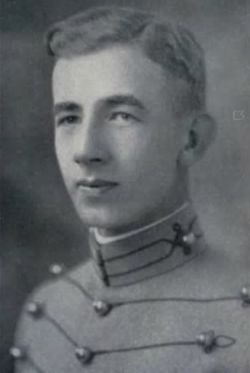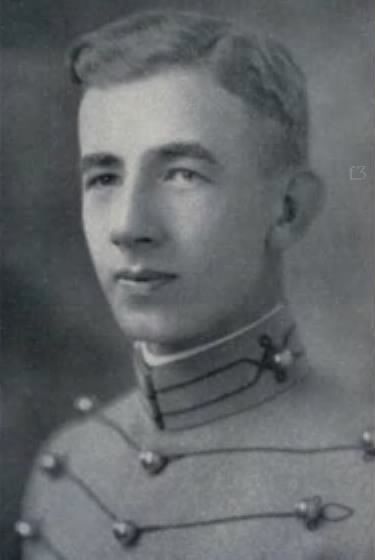Major James C. Blanning POW/DIS
Hometown: New Castle, Pennsylvania
26th Cavalry Regiment, Philippine Scouts
Service# 0-018442
Died January 25, 1945 in POW ship en route to Japan
Awards: Bronze Star Medal and, posthumously, the Legion of Merit, Purple Heart
Biography gleaned from www.westpointaog.org
Graduate United States Military Academy Class of 1931
James Blanning was born 12 November 1908 in New Castle, Pennsylvania to Edwin J. and Lillian Kieper Blanning. He attended the public schools in Newcastle, graduating from Lincoln High School, Class of 1927. He played basketball and football and was president of his class of 394 students all four years in high school. Jim sought and won an appointment to West Point from Congressman T. W. Philips of the 26th District of Pennsylvania.
While at West Point, he took the military training, academics, social life and athletics in stride. After graduation and summer leave, Jim was among 100 classmates in the first class of students officers to attend what was known as “The West Point Air” at new Randolph Field near San Antonio, Texas. Though the class was ordered to report from leave at the end of August, incomplete facilities prevented the start of flight training until November. Jim and his classmates took advantage of this free time to become acquainted with activities in and about San Antonio.
When rigorous flight training and ground school got under way, it became apparent to Jim that flying was not to his liking. Early in 1932 he was transferred to Fort Clark in Bracketville, Texas, not far from the Mexican border. There he joined the 5th Regiment of the 7th Cavalry. He plunged wholeheartedly into the duties of a junior troop officer—drill, troop administration, long rides, field exercises and recreation. Jim loved horses, and life in the Cavalry grew on him. He became a top-notch horse Cavalry officer. In 1935 he was assigned to the Cavalry Equitation School at Fort Riley, Kansas, where he met Virginia, sister of Franklin Wing '30. They were married 29 February 1936.
That summer, Jim and Virginia moved to another Cavalry post, Fort Des Moines, Iowa. It was there that Jim and Virginia started their family. A son was born; later came another son. In 1938, the family moved back to Fort Riley for Advanced Equitation. In addition to Jim’s outstanding achievements in equitation during this tour, their third son was born. After a year at Riley, Jim and family sailed to the Philippines and the 26th Cavalry at Fort Stotsenburg. From 1940-41 Jim was a troop commander undergoing training and maneuvers with units inadequately equipped with World War I weapons and material. There was a feeling that war was coming. On 14 May 1941, Virginia and the boys were sent home.
Jim was assigned to command headquarters company of the newly-formed I Philippines Corps, commanded by General Wainwright. Jim was faced with the usual myriad of personnel, administration, training and transportation problems of new units. After the Japanese attack on the Philippines, and the Corps moved to Bataan, Jim’s job became particularly difficult. General Wainwright always moved his headquarters last. Moreover, on Bataan, he kept even closer to the Japanese lines than some of his division headquarters. In the latter part of the campaign, Corps Headquarters was under Japanese artillery fire daily. On one occasion a quartermaster dump was heavily bombed. Without hesitation, Jim went to their aid.
When Bataan fell, Jim was taken prisoner. On the walk out of Bataan he was always the Good Samaritan. In the prison camp for nearly two and a half years, Jim had the unpleasant task of providing the daily work detail to the Japanese. They usually demanded more men than were able to work. Jim would accompany them to the barracks to route out more men. He would argue with them although he knew he would be beaten for going too far.
On 14 December 1944, Jim was among the POW s loaded into one of the three “Hell Ships” which sunk later that day after sailing from Manila. He survived this bombing and on 26 December was loaded on another POW ship which was bombed on 9 January 1945 off Taiwan. Again, he not only survived but assisted in the rescue of many of his fellow POWs. On 14 January, he was transferred to a third POW ship. During this ordeal Jim distributed rice and with his bare hands cleaned out a hold which had been used as a stable to give others room to move about. He also had the sorrowful task of carrying the dead up the ladder to be thrown into the cold sea. Just before arriving in Japan in late January, he succumbed to exposure and starvation and was given up to the sea. He was a courageous man who gave much of himself so that others could survive.
Jim’s decorations include the Bronze Star Medal and, awarded posthumously, the Legion of Merit and the Purple Heart. He marched a career exemplifying Duty, Honor, Country. His family and classmates are proud of him.
Major James C. Blanning POW/DIS
Hometown: New Castle, Pennsylvania
26th Cavalry Regiment, Philippine Scouts
Service# 0-018442
Died January 25, 1945 in POW ship en route to Japan
Awards: Bronze Star Medal and, posthumously, the Legion of Merit, Purple Heart
Biography gleaned from www.westpointaog.org
Graduate United States Military Academy Class of 1931
James Blanning was born 12 November 1908 in New Castle, Pennsylvania to Edwin J. and Lillian Kieper Blanning. He attended the public schools in Newcastle, graduating from Lincoln High School, Class of 1927. He played basketball and football and was president of his class of 394 students all four years in high school. Jim sought and won an appointment to West Point from Congressman T. W. Philips of the 26th District of Pennsylvania.
While at West Point, he took the military training, academics, social life and athletics in stride. After graduation and summer leave, Jim was among 100 classmates in the first class of students officers to attend what was known as “The West Point Air” at new Randolph Field near San Antonio, Texas. Though the class was ordered to report from leave at the end of August, incomplete facilities prevented the start of flight training until November. Jim and his classmates took advantage of this free time to become acquainted with activities in and about San Antonio.
When rigorous flight training and ground school got under way, it became apparent to Jim that flying was not to his liking. Early in 1932 he was transferred to Fort Clark in Bracketville, Texas, not far from the Mexican border. There he joined the 5th Regiment of the 7th Cavalry. He plunged wholeheartedly into the duties of a junior troop officer—drill, troop administration, long rides, field exercises and recreation. Jim loved horses, and life in the Cavalry grew on him. He became a top-notch horse Cavalry officer. In 1935 he was assigned to the Cavalry Equitation School at Fort Riley, Kansas, where he met Virginia, sister of Franklin Wing '30. They were married 29 February 1936.
That summer, Jim and Virginia moved to another Cavalry post, Fort Des Moines, Iowa. It was there that Jim and Virginia started their family. A son was born; later came another son. In 1938, the family moved back to Fort Riley for Advanced Equitation. In addition to Jim’s outstanding achievements in equitation during this tour, their third son was born. After a year at Riley, Jim and family sailed to the Philippines and the 26th Cavalry at Fort Stotsenburg. From 1940-41 Jim was a troop commander undergoing training and maneuvers with units inadequately equipped with World War I weapons and material. There was a feeling that war was coming. On 14 May 1941, Virginia and the boys were sent home.
Jim was assigned to command headquarters company of the newly-formed I Philippines Corps, commanded by General Wainwright. Jim was faced with the usual myriad of personnel, administration, training and transportation problems of new units. After the Japanese attack on the Philippines, and the Corps moved to Bataan, Jim’s job became particularly difficult. General Wainwright always moved his headquarters last. Moreover, on Bataan, he kept even closer to the Japanese lines than some of his division headquarters. In the latter part of the campaign, Corps Headquarters was under Japanese artillery fire daily. On one occasion a quartermaster dump was heavily bombed. Without hesitation, Jim went to their aid.
When Bataan fell, Jim was taken prisoner. On the walk out of Bataan he was always the Good Samaritan. In the prison camp for nearly two and a half years, Jim had the unpleasant task of providing the daily work detail to the Japanese. They usually demanded more men than were able to work. Jim would accompany them to the barracks to route out more men. He would argue with them although he knew he would be beaten for going too far.
On 14 December 1944, Jim was among the POW s loaded into one of the three “Hell Ships” which sunk later that day after sailing from Manila. He survived this bombing and on 26 December was loaded on another POW ship which was bombed on 9 January 1945 off Taiwan. Again, he not only survived but assisted in the rescue of many of his fellow POWs. On 14 January, he was transferred to a third POW ship. During this ordeal Jim distributed rice and with his bare hands cleaned out a hold which had been used as a stable to give others room to move about. He also had the sorrowful task of carrying the dead up the ladder to be thrown into the cold sea. Just before arriving in Japan in late January, he succumbed to exposure and starvation and was given up to the sea. He was a courageous man who gave much of himself so that others could survive.
Jim’s decorations include the Bronze Star Medal and, awarded posthumously, the Legion of Merit and the Purple Heart. He marched a career exemplifying Duty, Honor, Country. His family and classmates are proud of him.
Gravesite Details
Entered the service from Pennsylvania.
Family Members
Other Records
Sponsored by Ancestry
Advertisement
Records on Ancestry
Advertisement














